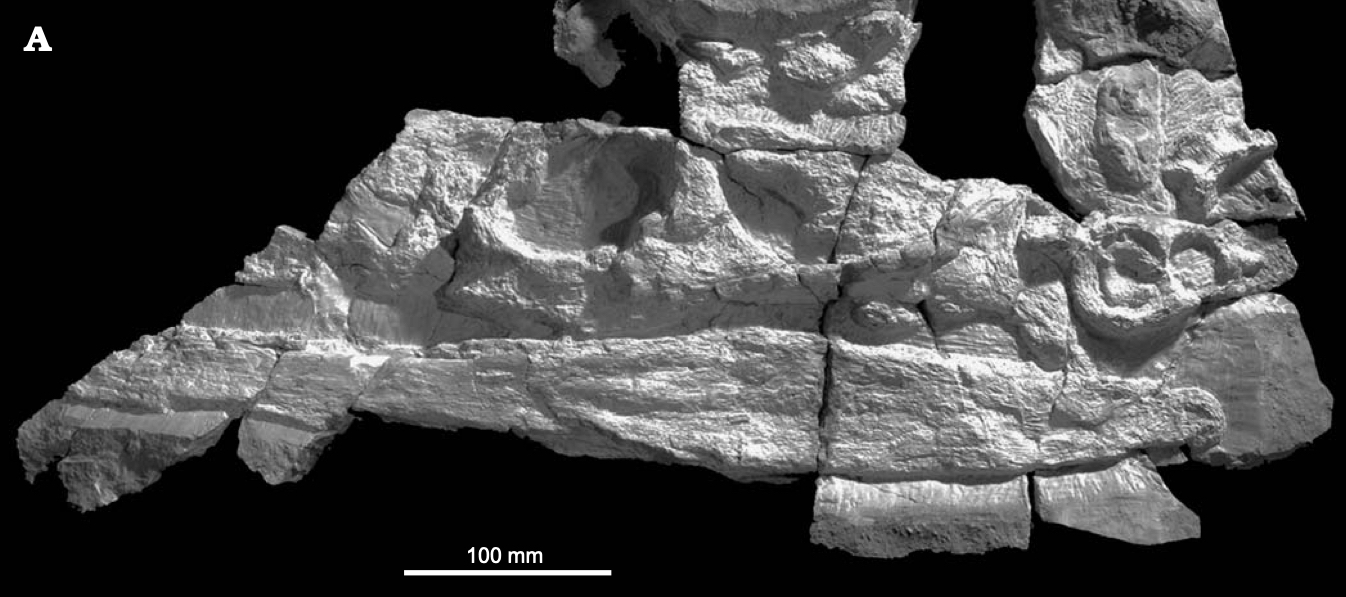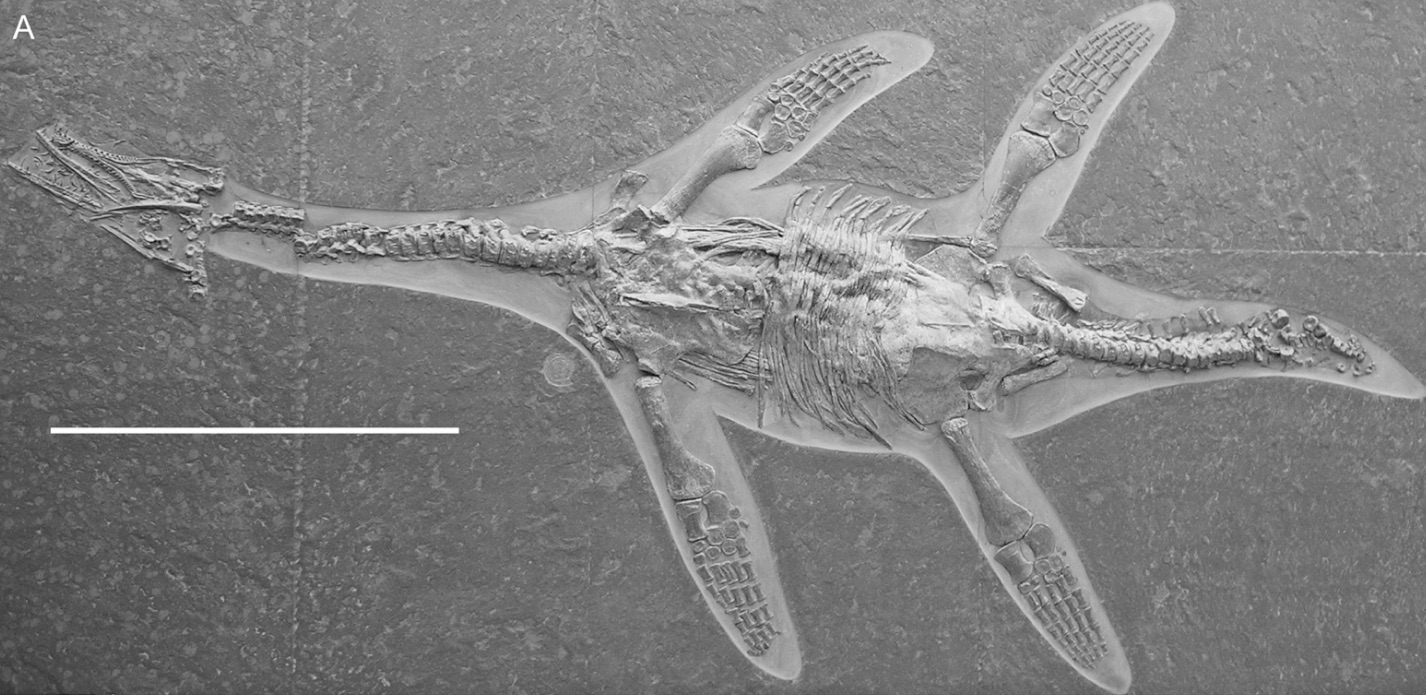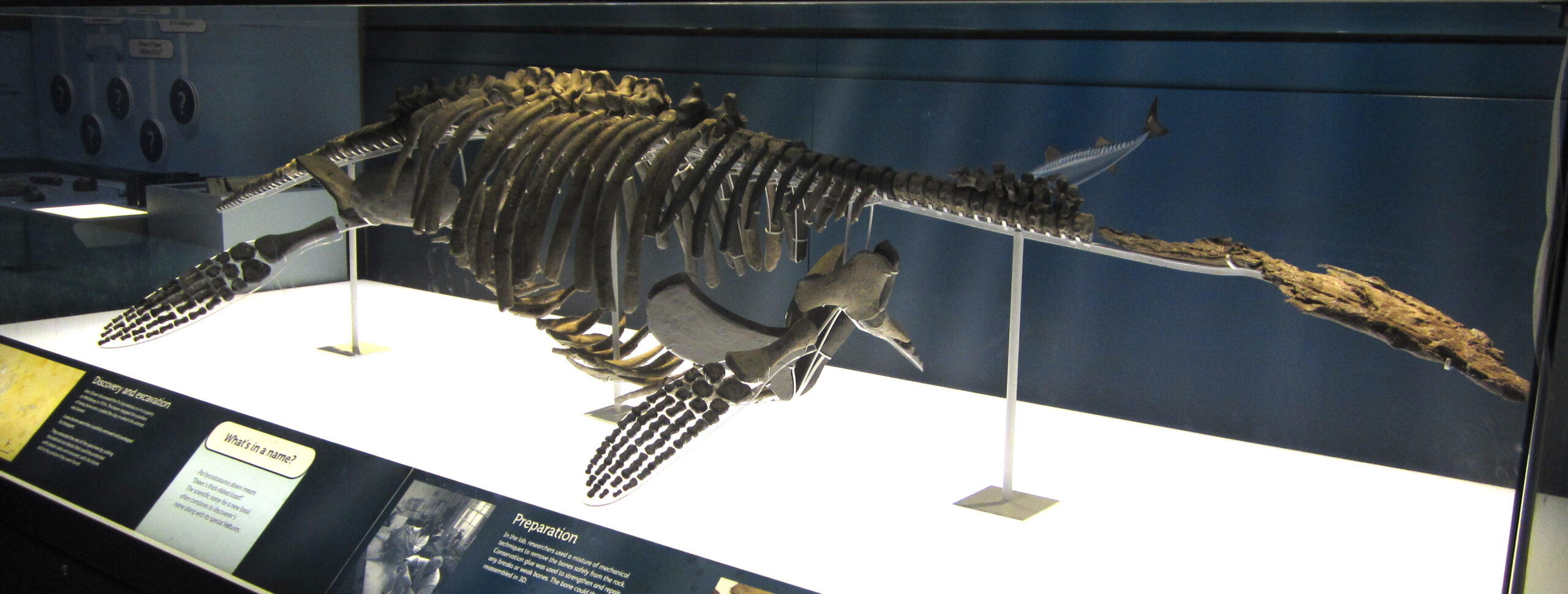Pliosauridae
Pliosaurids are a large family of short-necked plesiosaurs within the superfamily Pliosauroidea. They have a reduced number of neck vertebrae and are often large skulls. In some genera the skull may reach up to 3 meters in length and make up about a quarter of the total length of the animal. The Pliosauridae is usually placed in a sister relationship with a second group of pliosaurs, the Rhomaleosauridae.

The family Brachaucheninae has been proposed for pliosaurs which have very short necks and lack typical nutritive foramina on the vertebrae. This group includes Brachauchenius and Kronosaurus.
Pliosaurid genera

Anguanax
Anguanax is the first articulated plesiosaur ever found in Italy. It is a basal thalassophonean pliosaur from the Late Jurassic (middle Oxfordian). The type and only known specimen (MPPL 18797) of Anguanax was originally described as an indeterminate pliosaurid (Cau and Fanti 2014), but was subsequently named after reanalysis by the same authors the following year (Cau and Fanti 2015).

Attenborosaurus
Attenborosaurus is an unusual plesiosaur because it combines a long neck with a relatively large head. It is classified as a pliosaur in some classifications, but some phylogenies place it in a more basal position. The genus was introduced for ‘Plesiosaurus’ conybeari, a species originally described by Sollas (1881).
Cryonectes
Under construction
Gallardosaurus
Under construction

Hauffiosaurus
Hauffiosaurus is a basal pliosaurid known from the Lower Jurassic (Toarcian) of the UK and Germany. Hauffiosaurus is a medium to large sized plesiosaur (H. zanoni = 3.4 m, H.

Kronosaurus
Due to its large size and ferocious appearance, Kronosaurus is one of the most famous plesiosaurs. The iconic skeleton referred to Kronosaurus on display in the Museum of Comparative Zoology in Harvard is nicknamed ‘plasterosaurus’ because so much of it is reconstructed in plaster.

Liopleurodon
Liopleurodon is a pliosaur that hardly needs introduction since appearing as the villain in the BBC’s ‘Walking with Dinosaurs’ TV series. This led to popular misconceptions about the size of Liopleurodon, which is known to have reached adult sizes in the region of seven metres long, nowhere near the gargantuan 25m estimate proposed by the series and later perpetuated elsewhere.

Marmornectes
Marmornectes is a pliosaur with a long and narrow snout from the Oxford Clay. It was described and named by Ketchum and Benson (2011a). The type and only specimen (BEDFM 1999.201) comprises a substantially complete skeleton including a partial skull.
Megalneusaurus
Under construction
Monquirasaurus
Monquirasaurus is a giant pliosaurid from Colombia, South America. Originally named by Hampe (1992) as a species of Kronosaurus (K. boyacensis), the skeleton was later allocated to the new genus Monquirasaurus by Noè and Gómez-Pérez (2021).

Pachycostasaurus
Pachycostasaurus is approximately 3.1 meters long. Its rib cage and vertebrae exhibit thickened bone (Cruickshank et al. 1996) a condition termed pachyostosis. This heavy ossification is unusual in plesiosaurs (another exception may include Kronosaurus), although it is common in basal sauropterygians, especially pachypleurosaurs.

Peloneustes
Peloneustes is one of several pliosaur genera from the Oxford Clay Formation in the UK. It is one of the better known pliosaurs from this horizon, represented by 12 nearly complete skulls and several skeletons. It is also the most abundant pliosaur from the Peterborough Member of the Oxford Clay Formation (Ketchum and Benson 2011b).

Pliosaurus
Under construction
Skull of Pliosaurus kevani in right lateral view. From Benson et al. (2013).
The ‘Westbury Pliosaur 1’ specimen of Pliosaurus brachyspondylus, skull on display in the Bristol Museum and Art Gallery. Photo by Chris Crump.

Simolestes
Simolestes has variously been allied with the Pliosauridae and the Rhomaleosauridae. The most noticeable difference between Simolestes and the other pliosaur taxa from the Oxford Clay (Liopleurodon, Peloneustes, Pachycostasaurus), is its much shorter snout and mandibular symphysis, a character is shares with the Rhomaleosauridae.
Stenorhynchosaurus
Under construction
Several pliosaurid genera are considered nomina dubia or are regarded as junior synonyms of other genera. The following names are therefore invalid:
- ‘Stretosaurus’ = Liopleurodon?
